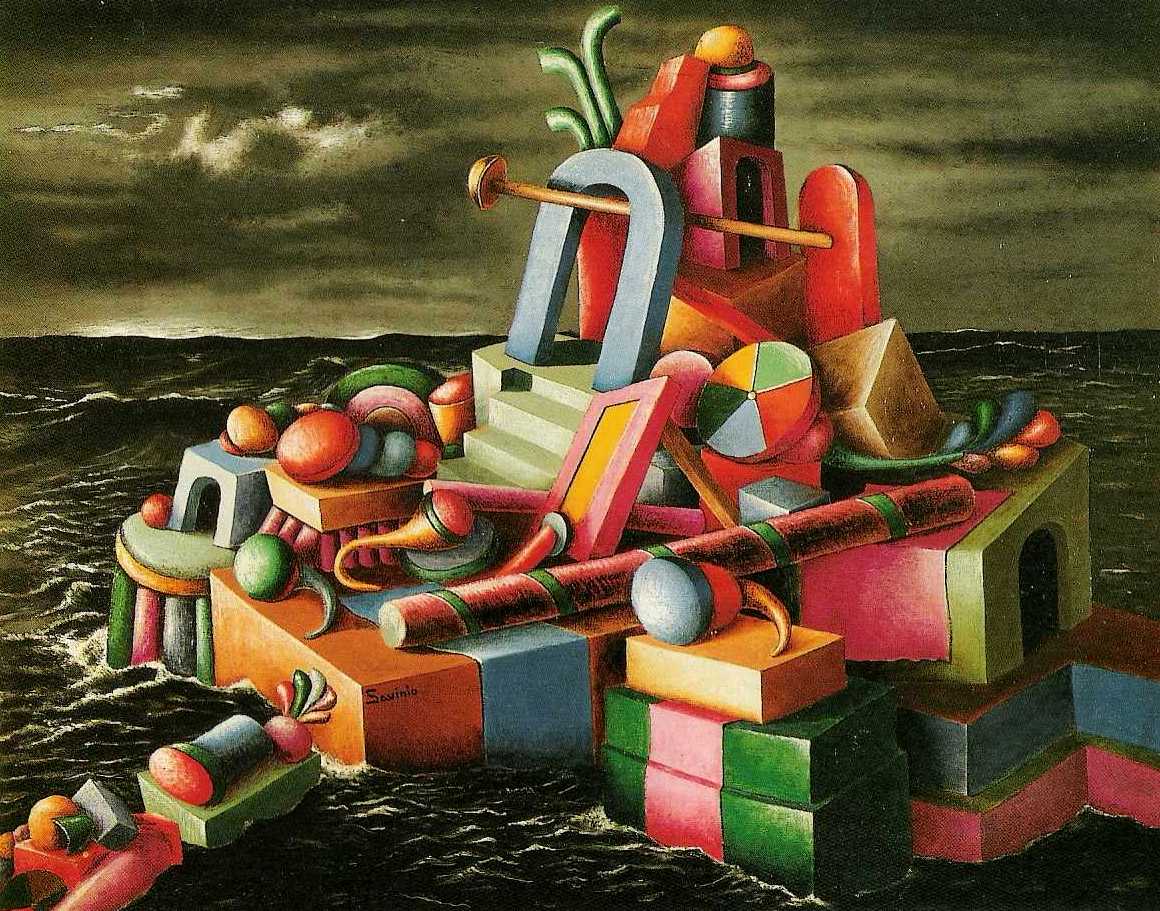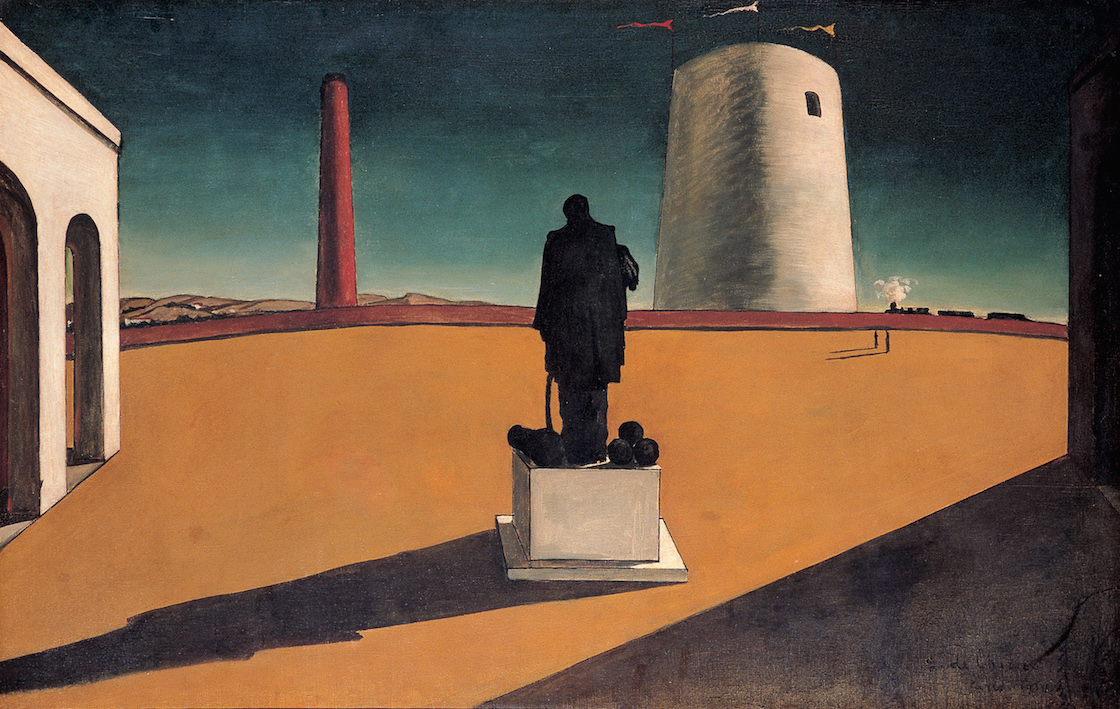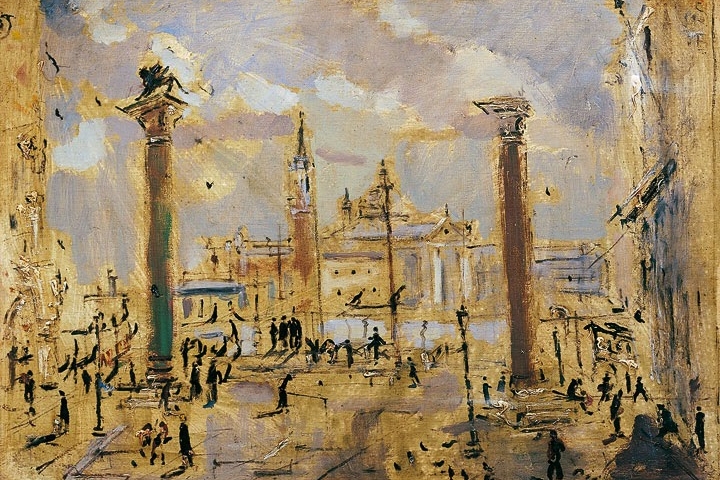Metaphysical Painting is one of Italy’s significant contributions to the historical avant-gardes of the 1900s, an indispensable passage for the birth of Surrealism.
In those years, Futurism was emerging, and Metaphysical Painting was the exact opposite. For example, in Futurism, it is all dynamism and speed; in Metaphysical dominates absolute immobility.
Defining Metaphysical Painting
The term “Metaphysical Painting” indicates the particular relationship of this painting movement towards reality. Compared to other pictorial currents that were emerging in the early twentieth century, Metaphysical Painting is characterized by its order and compositional clarity.
The paintings depict recognizable objects and shapes, placed in well-defined spaces from an architectural point of view. Still, the various elements mix in an absurd way, without an apparent connection between them.

The Metaphysical paintings recall stages, on which are both strange and paradoxical representations: the background itself emphasizes the silence and stillness of the air.
The perfection of real objects placed in this way sets these works of art outside reality, hence the name “Metaphysics.”
History of metaphysical Painting
Metaphysical Painting is one of the leading Italian artistic trends of the first half of the 1900s. This presents an evident charge of suggestion, rich in magical and enigmatic atmospheres, where absolute silence is manifests itself

We cannot define it as a real movement, but rather a current. In fact, it is not based on a manifesto or a programmatic document. It does not assume the countenance of a group. It is not even possible to set a precise debut date.
Like all currents, on the other hand, its poetics and characteristic elements can be defined.
The features of Metaphysical Painting
The objects in metaphysical paintings can be mannequins, torsos of sculptures, metronomes, toys, bottles, boxes, spheres, artist’s tools, etc. Its main features are stylized and schematic physiognomy, sharp contours, two to thin black lines, simplified surfaces with elementary chiaroscuro, and mostly monochrome shadows. The spaces that form the backdrop to the objects present typologies that differ according to the author.
Almost all the paintings of Carrà, Morandi, De Pisis, and some of De Chirico, depict interiors of rooms. There are, however, many exceptions, mainly consisting of Giorgio de Chirico and Alberto Savinio. And also Giorgio Morandi deserves a separate discussion.

Open spaces often resemble De Chirico’s canvases, similar to squares, terraces, glimpses of arches. Particularly famous are the so-called “squares of Italy”: visions of open spaces on the horizon, delimited by arched buildings, towers, and more or less known architectures, with ancient sculptures placed in the foreground.
Giorgio Morandi‘s canvases from 1918-19 are, instead, metaphysical still lifes, in which objects appear arranged on tables.
The main characteristics of the spaces that form the background are clarity and clarity of the composition, schematic and simplification of architectural structures, presence of forced perspectives and improbable escape lines, and use of warm and earthy colors.